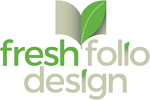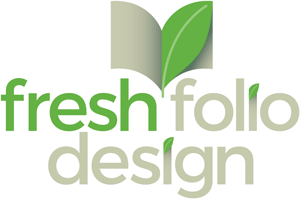Color is a massive topic. Entire college classes are dedicated to the topic of color theory. Which makes sense when you think about how powerful color can be.
Many studies have been done on the impact of color in marketing. It was determined that people make up their mind within 90 seconds of interacting with a product, and that 62-90% of that assessment is based on the colors alone. For those who want to dive deeper into the data, here’s a link to that study.
Professional designers don’t choose color based on whims or personal preference.
You would be amazed at how often clients want to dictate what colors should, and shouldn’t, be used in a brochure, based solely on their individual preference. That approach is short-sighted (Repeat after us, “You are not your target audience!”) and in the end the design is compromised.
If colors are selected based on solid color theory, and consistent with the content, the end result will be an effective and harmonious color palette. Applied to a solid design, the perspective of not liking a particular color is severely weakened, if not totally irrelevant.
Come to Terms
So let’s start with a few basic terms in color theory: hue, saturation, and value.
The last part of what we will be discussing are color schemes. Color schemes are basically the formula that you follow to create a color palette. The formulas are defined by the relationship of a hue to other colors on the wheel.

Let’s look at 3 different color schemes and see them each applied to a single piece of artwork.
Monochromatic A single hue is selected and then various shades and tints are used to expand the palette. This type of color scheme produces a palette that is simple, but very effective. While this particular use of color may be more subtle, it provides a strong sense of harmony within a design.
Analogous Selecting colors next to each other on the color wheel results in an analogous palette. In our example, we use blue-violet, violet and red-violet. The violet hue is at the core of all three colors, which creates harmony within the artwork.
Complementary These colors reside directly across from one another on the color wheel. Compared to the previous color palettes, this one offers more potential for contrast. As you can see in our graphic, we used tints of both colors to create additional visual interest. In this example, the yellow-green is used as an accent, providing a pop of color at the center of the artwork.
This is just the beginning of the potential color schemes that are possible. When you really dive deep you will discover other color schemes such as split complementary, triad and tetradic. If the slumbering color geek inside you is still not satisfied, here are some links we would recommend.
Once you start looking around, you will begin to identify these color schemes at play. This is where the fun begins.
Let’s say that you are designing a corporate brochure for a finance company. The tone of the material is professional and direct. You may start with a monochromatic palette or possibly an analogous palette that is desaturated.
Or what if the brochure is promoting a family-friendly event that will have music, food and games? This sounds like a job for saturated colors and a complementary palette to start. (Ultimately we’d probably go with a split-complementary, but that’s cause we are total color geeks.)
Your new understanding of basic color theory, can open up entirely new ways of working with color and harnessing its potential to better serve your message.
We hope these examples highlight the variety of ways that you can arrive at interesting and engaging color palettes. In the end, there isn’t just one way to get to a strong solution. As long as color theory is at the foundation of your choices, the end result will work well together and bring visual harmony to your brochure.
Let us know if this information was helpful or if there are other design topics that you would like to hear more about. Each week we want to bring value in these posts. We appreciate any thoughts and feedback to help us serve you better.










Mastermin
Thank you for your blog post.Really thank you! Awesome.
Rebecca Gallagher
Thanks for the comment. Always good to hear the content was helpful. Is there any other topic you would be interested in hearing more about?